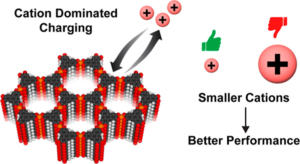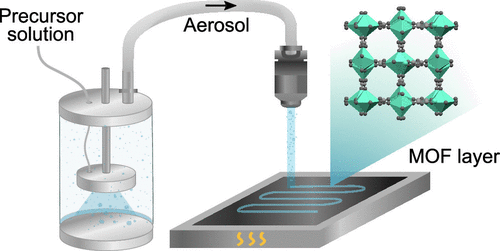Understanding Electrolyte Ion Size Effects on the Performance of Conducting Metal–Organic Framework Supercapacitors
Authors: Jamie W. Gittins, Kangkang Ge, Chloe J. Balhatchet, Pierre-Louis Taberna, Patrice Simon, Alexander C. Forse
Journal: Journal of the American Chemical Society
Abstract:

Layered metal–organic frameworks (MOFs) have emerged as promising materials for next-generation supercapacitors. Understanding how and why electrolyte ion size impacts electrochemical performance is crucial for developing improved MOF-based devices. To address this, we investigate the energy storage performance of Cu3(HHTP)2 (HHTP = 2,3,6,7,10,11-hexahydroxytriphenylene) with a series of 1 M tetraalkylammonium tetrafluoroborate (TAABF4) electrolytes with different cation sizes. Three-electrode experiments show that Cu3(HHTP)2 exhibits an asymmetric charging response with all ion sizes, with higher energy storage upon positive charging and a greater charging asymmetry with larger TAA+ cations. The results further show that smaller TAA+ cations demonstrate superior capacitive performances upon both positive and negative charging compared to larger TAA+ cations. To gain further insights, electrochemical quartz crystal microbalance measurements were performed to probe ion electrosorption during charging and discharging. These reveal that Cu3(HHTP)2 has a cation-dominated charging mechanism, but interestingly indicate that the solvent also participates in the charging process with larger cations. Overall, the results of this study suggest that larger TAA+ cations saturate the pores of the Cu3(HHTP)2-based electrodes. This leads to more asymmetric charging behavior and forces solvent molecules to play a role in the charge storage mechanism. These findings significantly enhance our understanding of ion electrosorption in layered MOFs, and they will guide the design of improved MOF-based supercapacitors.
You can access the full paper here.






